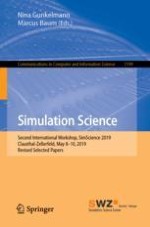2020 | OriginalPaper | Buchkapitel
Investigating the Role of Pedestrian Groups in Shared Spaces through Simulation Modeling
verfasst von : Suhair Ahmed, Fatema T. Johora, Jörg P. Müller
Erschienen in: Simulation Science
Aktivieren Sie unsere intelligente Suche, um passende Fachinhalte oder Patente zu finden.
Wählen Sie Textabschnitte aus um mit Künstlicher Intelligenz passenden Patente zu finden. powered by
Markieren Sie Textabschnitte, um KI-gestützt weitere passende Inhalte zu finden. powered by
